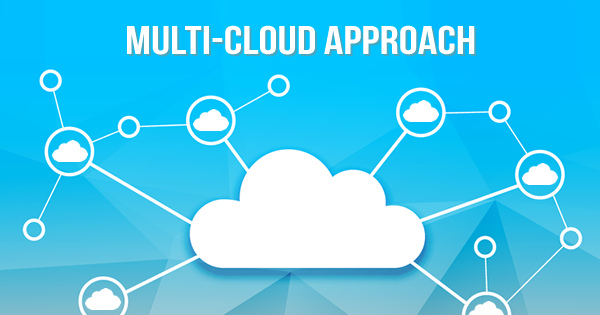Making hybrid multi-cloud ideal according to the majority of respondents (75%), IT leaders are also realizing that there is no one-size-fits-all approach to the cloud
Multi-cloud is quickly becoming the dominant IT architecture in use, as cloud adoption continues to increase around the world. The multi-cloud, for most businesses, gives them the flexibility to enjoy the best of all cloud providers and use them based on what they need.
An average organization today is reported to have at least three to five different cloud providers instead of just relying on one cloud provider. In fact, Gartner reports that by 2025, 51% of IT spending in application software, infrastructure software, business processes, and system infrastructure markets will have shifted to the public cloud.
According to findings from Nutanix’s 2022 Enterprise Cloud Index (ECI) survey and research report, more public sector organizations than average have adopted multi-cloud as a primary IT operating model, outpacing the global average. In the next three years, adoption is expected to nearly double from 39% to 67%.
With adoption nearly twice the global average, the global public education sub-sector reported the largest usage among all ECI respondents (69%). In the US, with 47% having adopted multi-cloud, the federal sub-sector is also well ahead of the average.
However, the complexity of managing across cloud borders remains a major challenge for public sector organizations as 85% agreed that to succeed, their organizations need to simplify the management of multiple clouds. 75% agree that a hybrid multi-cloud model, an IT operating model with multiple clouds both private and public with interoperability between, is ideal to address top challenges related to cost, security, interoperability, and data integration.
For Chip George, VP of Public Sector at Nutanix, the evolution to a multi-cloud IT infrastructure that spans a mix of private and public clouds is underway across the globe, with the public sector on the fast track. George explained that the evolution requires a dedication to inherent, strong platform security to fully execute on the multi-cloud vision and extend capabilities from the core to the tactical edge.
Public sector organizations must look to hybrid multi-cloud solutions that meet security requirements while delivering visibility, manageability, and consistent policy-enforcement coupled with tight cost control across environments”, commented George.
From the survey, the respondents did highlight several challenges they faced in multi-cloud adoption. They include securing their data across multiple clouds (49%), application mobility (47%), security (46%), and managing costs (45%). A lack of IT skills also meant that simplifying operations is likely to be a key focus for many in the year ahead.
No one size fits all in multi-cloud
Making hybrid multi-cloud ideal according to the majority of respondents (75%), IT leaders are also realizing that there is no one-size-fits-all approach to the cloud. By providing a unified cloud environment in which security and data governance policies can be applied uniformly, this model will help address some of the key challenges of multi-cloud deployments.
When it comes to application mobility, compared to the 91% average across industries (91%), only 75% of public sector organizations moved one or more applications to a new IT environment over the last year. Those that did cite improving security and/or meeting regulatory requirements (33%), gaining control (31%), and performance (30%) were the top drivers.
Versus 80% of all respondents across industries, indicating that application mobility is perceived to be slightly less problematic, moreover, 76% agreed that moving a workload to a new cloud environment can be costly and time-consuming. While US federal organizations had the highest level of concern, with 77% agreeing, public education organizations, which are ahead of the multi-cloud curve, were even more optimistic with only 56% agreeing on the difficulty of application mobility.
Improving the security posture, storage, 5G implementation, and improving multi-cloud management are the top public sector IT priorities in the multi-cloud. Global public sector respondents also said that the on-going pandemic spurred them to increase their IT spending in certain areas that emphasize bolstering their security posture, implementing AI-based self-service technology, and upgrading existing IT infrastructure.
The reality is though that there are complexities when it comes to running and moving workloads and applications across several different public clouds. Having a specific cloud for running specific processes is one way of dealing with this.
In recent times, technology in cloud services has also improved tremendously. Be it in the public sector or others, businesses can have access to cloud management tools that enable them to move workloads, applications, and data across the multi-cloud seamlessly. However, many feel that the process of integrating all the different clouds into a single system can still be tedious at times.
Ideally, when it comes to picking different cloud providers, businesses should have a proper cloud framework. Providers that can cater to their business needs and provide a seamless journey as well should be opted. There is no denying that the multi-cloud may be an efficient model in the cloud. But, it could just end up leading to more problems without proper planning.
Also read: CIO News interviews Shri Wangki Lowang, Minister (IT) of Arunachal Pradesh
Do Follow: CIO News LinkedIn Account | CIO News Facebook | CIO News Youtube | CIO News Twitter
About us:
CIO News, a proprietary of Mercadeo, produces award-winning content and resources for IT leaders across any industry through print articles and recorded video interviews on topics in the technology sector such as Digital Transformation, Artificial Intelligence (AI), Machine Learning (ML), Cloud, Robotics, Cyber-security, Data, Analytics, SOC, SASE, among other technology topics






